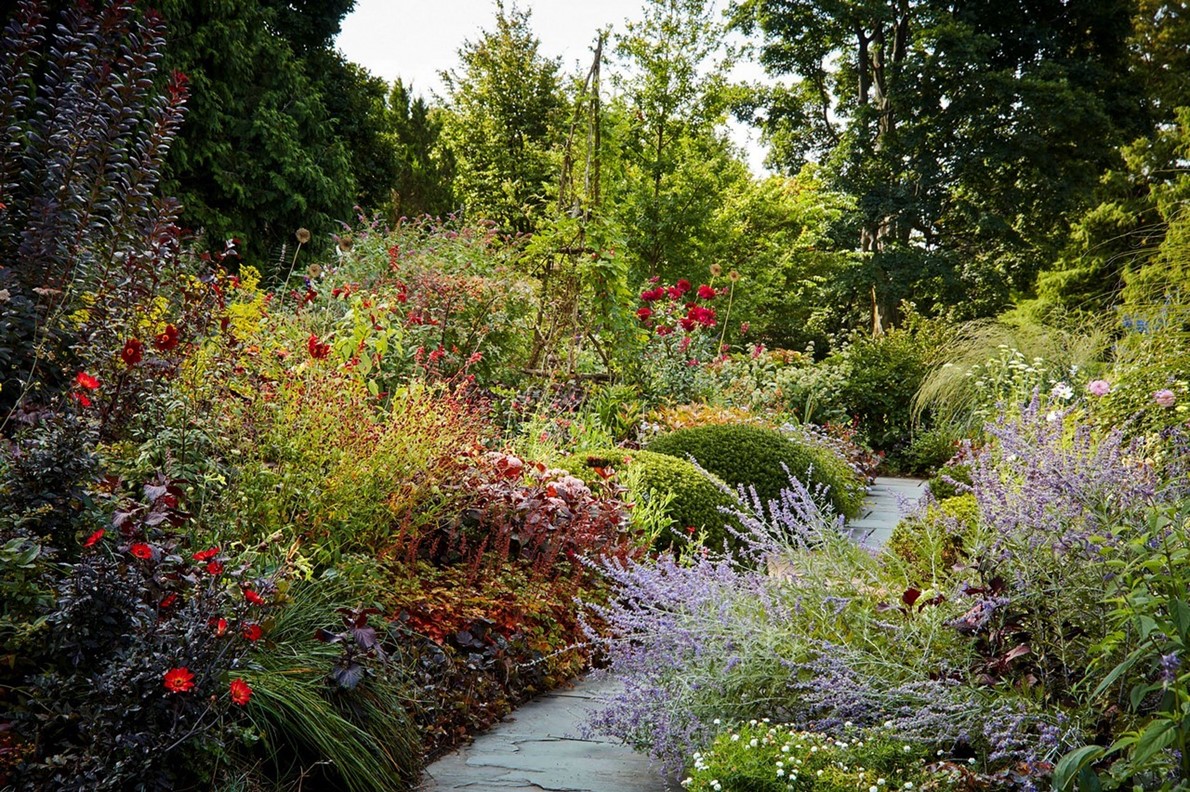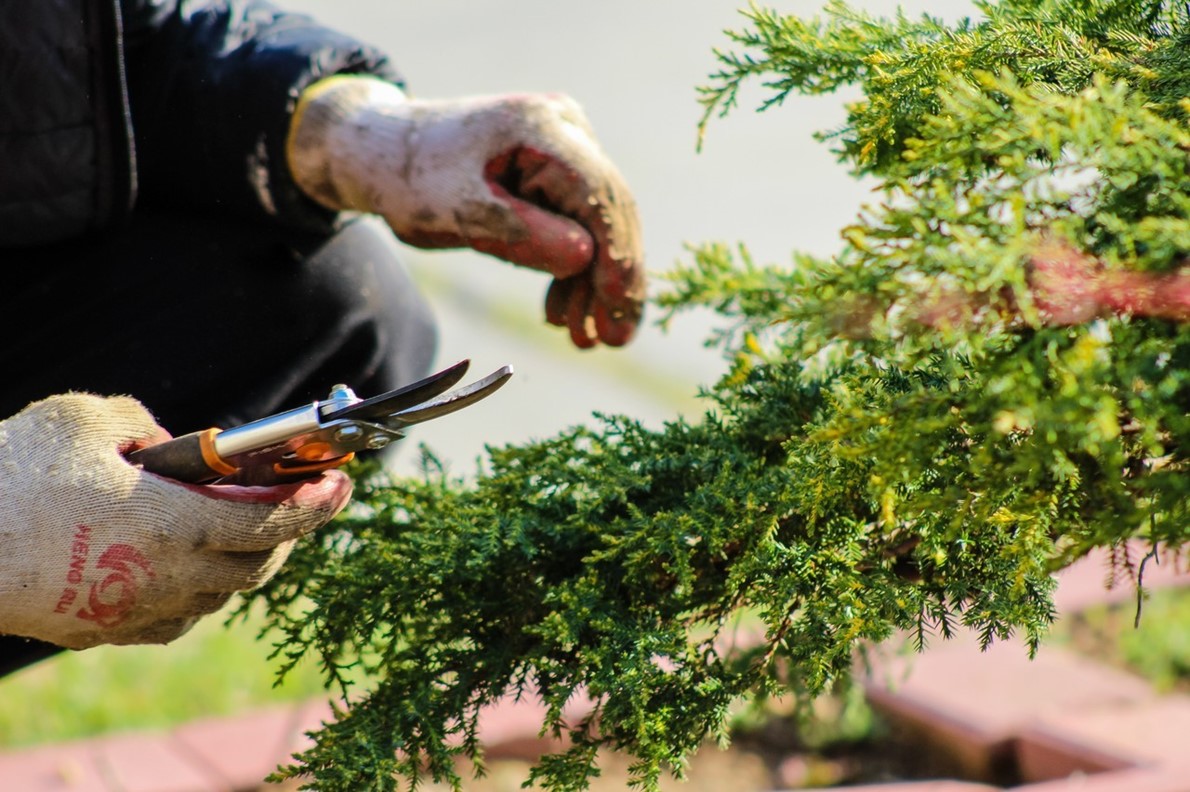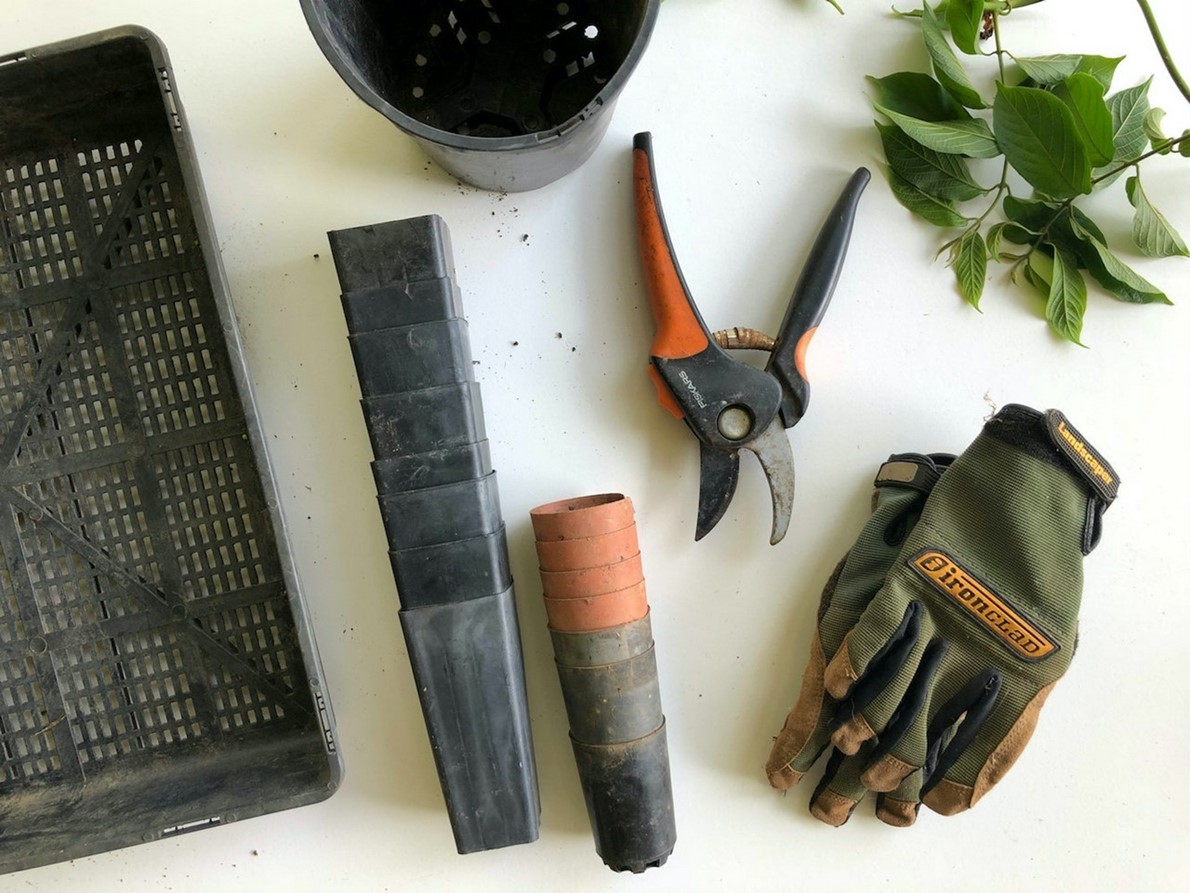On the cusp of fall, the direction that a
flower garden is headed may not be the stuff of viral social media images. And
it may not inspire a weary gardener’s delight.
اضافة اعلان
But do not stop now. As Jenny Rose Carey, a longtime
flower gardener and vocal believer in the possibilities of the weeks ahead,
puts it, “September is the new May”.
Of course, in the garden, May is a moment neither
short on color nor marred by what she calls “the crispy bits”. (First action
item: Tease those out with your snips and push ahead.) But Carey offers some
encouraging words. Think fresh, she advises us, and think vivid — even as
autumn comes on, and right through to frost.
Carey, a popular lecturer and author, is former
senior director of the
Pennsylvania Horticultural Society’s Meadowbrook Farm, a
public garden in a historic estate setting. So it is no surprise that her
recipe for a design with staying power relies on strategic plant choices.
 (Photo: Chanticleer, Taken by Lisa Roper)
(Photo: Chanticleer, Taken by Lisa Roper)
It also involves
something that gardeners too often skip: proactive maintenance tactics that
help coax the maximum output from flowering plants — even annuals planted
months ago. At her garden in Pennsylvania, the nasturtiums are still at it,
welcoming fall as enthusiastically as they do at Giverny — painter Claude
Monet’s garden in
France — where they lead visitors down the literal garden
path into the next season. You just have to know the trick.
As the heat begins to wane, Carey, who taught
horticulture at Temple University for years, is in back-to-school mode. That
means taking field trips, visiting gardens in search of ideas, especially
during the seasons that often stump us. She has taken inspiration from public
gardens such as Wave Hill in
New York City, where fall has long been a
celebrated season, and Chanticleer Garden in Wayne, Pennsylvania, where last
month and this month are still prime time, too.
How do you keep your garden going strong until the
frosty end? Start by looking at landscapes like those for clues.
Flower shape and
scale (and color, too)
The title of Carey’s new
book makes her approach clear: “The Ultimate Flower Gardener’s Guide: How to
Combine Shape, Color, and Texture to Create the Garden of Your Dreams.”
Color is just one element of her strategy — and it
is not even the first thing on her list. Although it may be what many gardeners
focus on when they’re plant shopping, a color palette alone will not ensure
cohesion in the garden.

And strong color elicits strong opinions:
Hot-colored gardens have their detractors as well as their adherents, and so do
pastel ones.
“But in general, everyone agrees that a garden that
looks really pretty, nice, joyful,” Carey said, “has a variety of shapes of
flowers, textures of leaves, and heights.”
She advises us to look more closely at form in the
garden — including the forms of flowers. How often do we gardeners consciously
consider that?
The pollinators do. A diversity of insects responds
to a range of shapes. Each species’ evolution alongside particular native
plants has engineered intimate relationships; flowers are not
one-size-fits-all.
Think about the forms that inflorescences take: As
summer winds down, Patrinia (Patrinia scabiosifolia) and the taller sedums are
still going strong with their flat-topped blooms. Spherical choices include
globe amaranth (Gomphrena globosa) and rattlesnake master (Eryngium
yuccifolium). Great blue lobelia (L. siphilitica) offers up vertical spikes, as
does obedient plant (Physostegia virginiana).

Other options include the later-blooming varieties
of the surprise lilies (Lycoris), with their trumpets, and lots of flowers
shaped like daisies.
Play with scale, too. “Some of the asters are very
cute, little, tiny daisies, and then you get the bigger, bolder ones,” Carey
said. “Get your eye in a little bit more and be a little more critical of your
compositions.”
Make the most of flowers with subtle differences,
such as Rudbeckia Henry Eilers, with its quilled petals. Here’s where color can
really help at a time when there is often too much yellow: Mix it up with the
orange-and-yellow flowers of Rudbeckia hirta Irish Eyes, with their showy green
centers, or the red-and-yellow petals of the annual blanket flower (Gaillardia
pulchella).
Annuals that can go
the distance, with care
The first plants we may
think of to bolster the garden’s late show are classic fall perennial
combinations, such as asters and goldenrods.

Two goldenrods that behave better and spread more
slowly than others in mixed plantings, Carey said, are Solidago rugosa
Fireworks and the compact cultivar S. sphacelata Golden Fleece. Also
recommended: aromatic aster (Symphyotrichum oblongifolium Raydon’s Favorite)
and white wood aster (Eurybia divaricata), which “makes a good mixer and
mingler,” she said.
But Carey is equally fond of the annuals grown
mostly from seed and planted in spring: Zinnias, spiky Celosia, flowering
tobacco (Nicotiana), and orange Cosmos sulphureus, with its bonus of
ferny-textured foliage. All are still going strong in late summer, thanks to
the regular trimming of stems that held spent blooms. So are cleome, Gomphrena,
and various salvias, with their tubular flowers that invite hummingbirds to
make a pit stop on the way south.
Do not forget the
Dahlias
Carey’s garden, called
Northview, is cottagelike in style, befitting her 1887 Arts-and-Crafts home.
Her flower-packed designs are not heavy on ornamental grasses or bold-foliage
tropical plants such as elephant ears (Alocasia and Colocasia), bananas and
cannas, two plant groups that extend the season until the first frost at Wave
Hill and Chanticleer.

Dahlias are Carey’s “bold beauties,” her late-season
mainstay. Their range of shapes is an object lesson in the mix-it-up advice she
gives about flower forms. There are spiky cactus types and frilly anemones,
some with a single row of petals like a daisy and others positively
overstuffed.
She lets frost blacken and knock down the dahlias —
“a very sad day in the garden” — and waits a week before cutting back the stems
to about 15cm above ground and digging the tubers. The uprooted plants rest on
crates for a few days, stem ends down, so excess moisture drains out. Then they
are rolled up in newspaper and stashed in the cellar for winter.
The Finale:
Chrysanthemums and colchicums
The last act of the season
will be the perennial chrysanthemums, which will last until frost takes them.
These are not those less-hardy, potted, garden-center mums of the moment in
autumnal shades, but silvery-pink Emperor of China, pink-and-white Clara Curtis
and Sheffield Pink. Their rosy tones provide a cooling foil to fall’s fiery
colors.
These plants, too, get some tough love at Carey’s
place. Pinching them back several times before midsummer reduces their eventual
height and promotes more blooms, as the Chelsea chop does earlier, on other
perennials.
There is another way that September is like May,
Carey noted: It is a time when we are busy working, not just admiring. Those
faded bits are trimmed back and then back again — although care should be taken
to leave behind anything that birds (or people) may enjoy come winter.
Seed is saved; perennials are divided. Bulbs are
bought and planted, including perhaps more autumn crocus (Colchicum), another
of the flower garden’s last gasps.
Their robust foliage, which emerged in spring,
disappeared as they went dormant in summer. Now what look like miniature
waterlilies in lilac and white seem to appear suddenly, out of nowhere,
enlivening the edges of some beds.
It’s one more hopeful effort in the race against the
inevitable — almost convincing us that the procession will never end.
Read more Property
Jordan News







